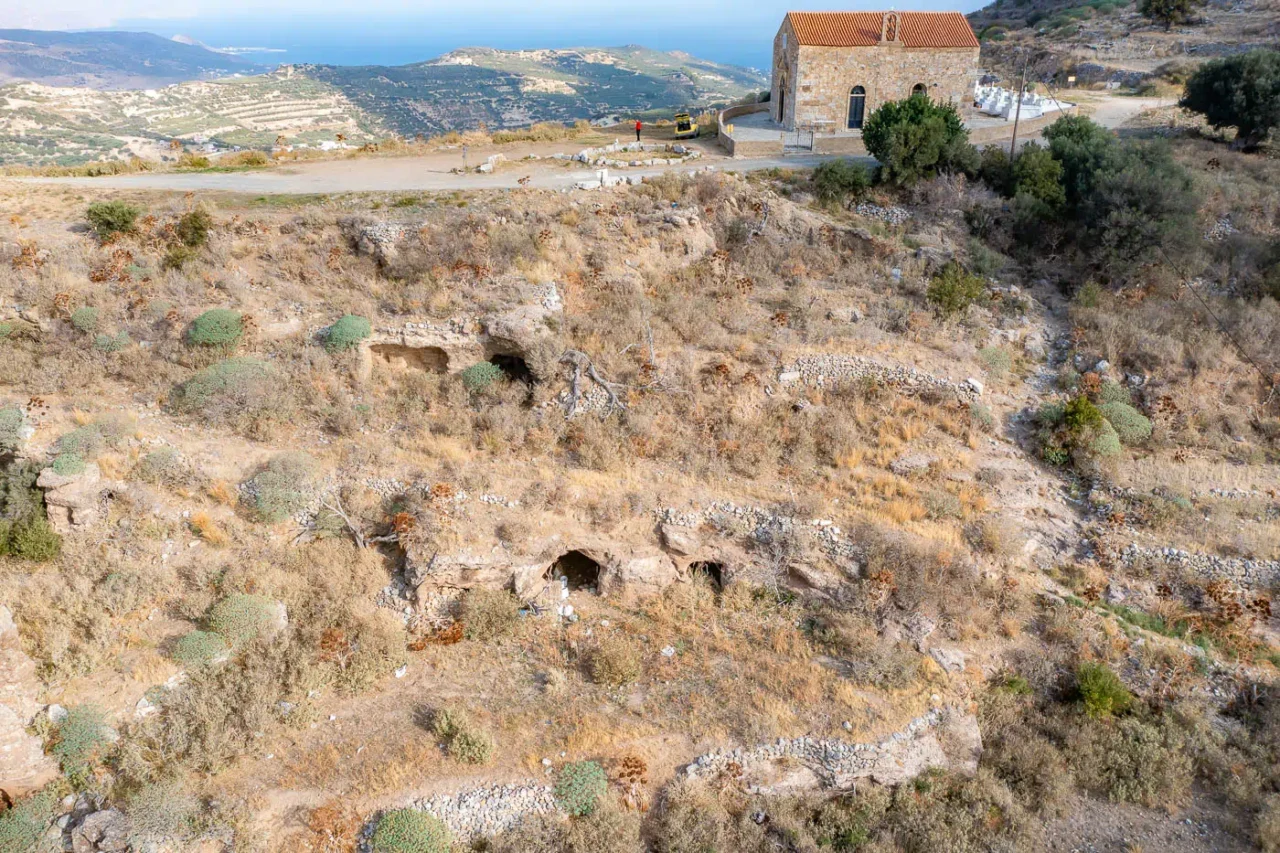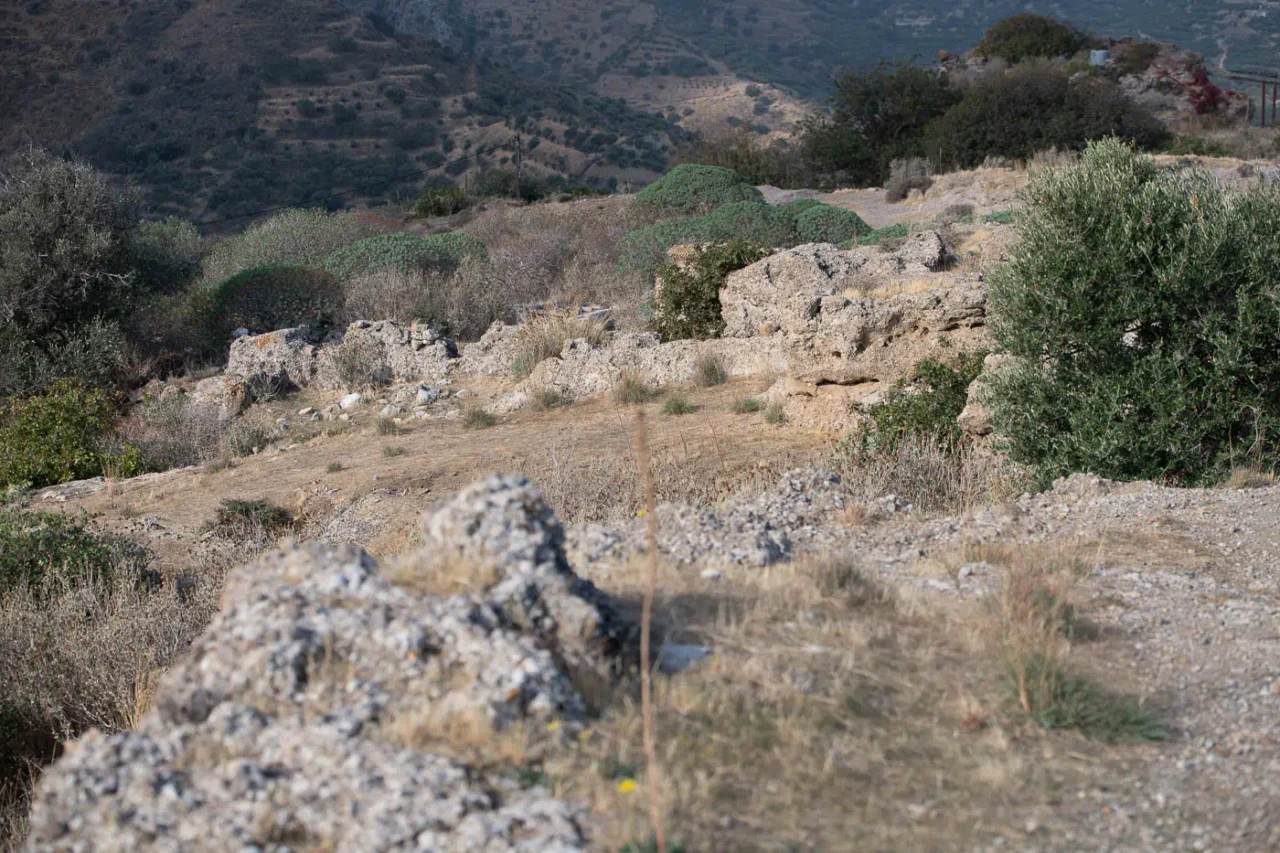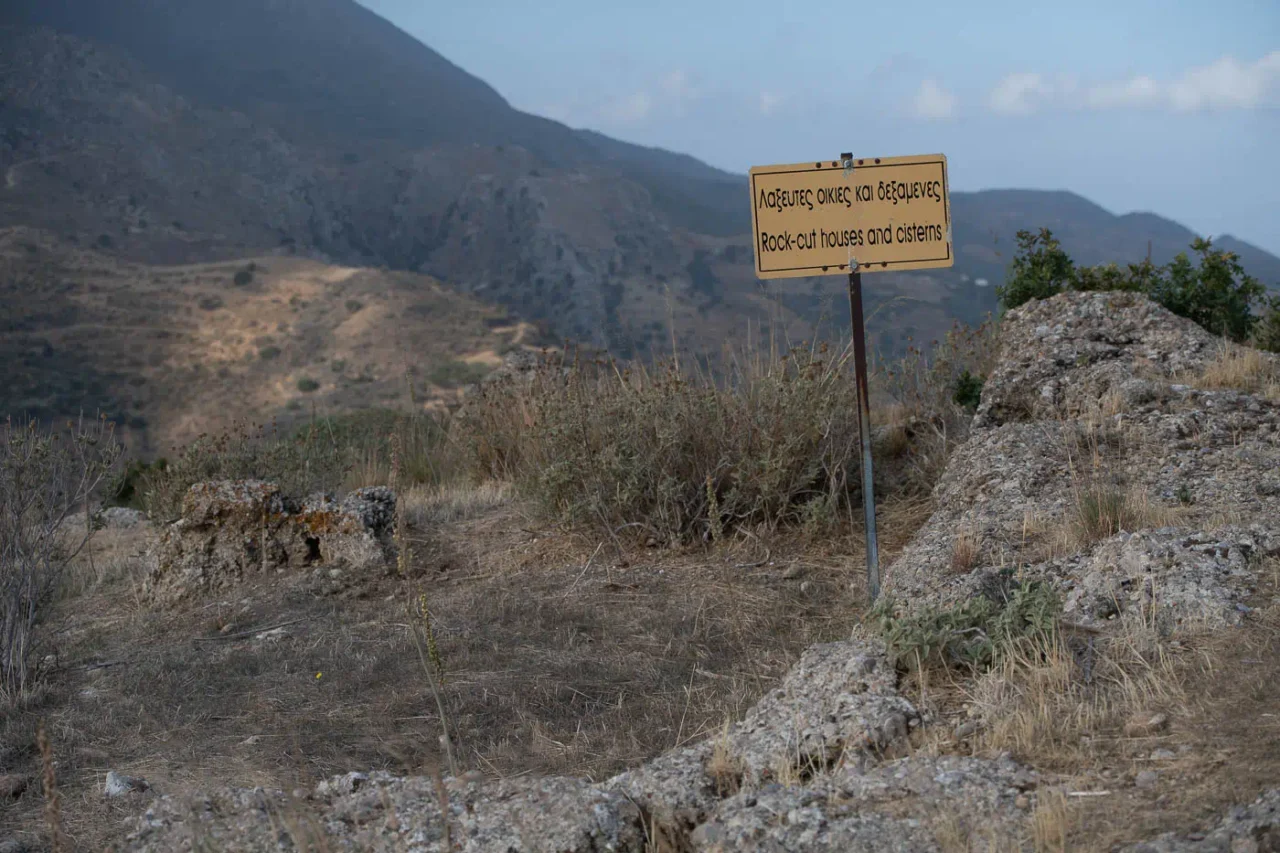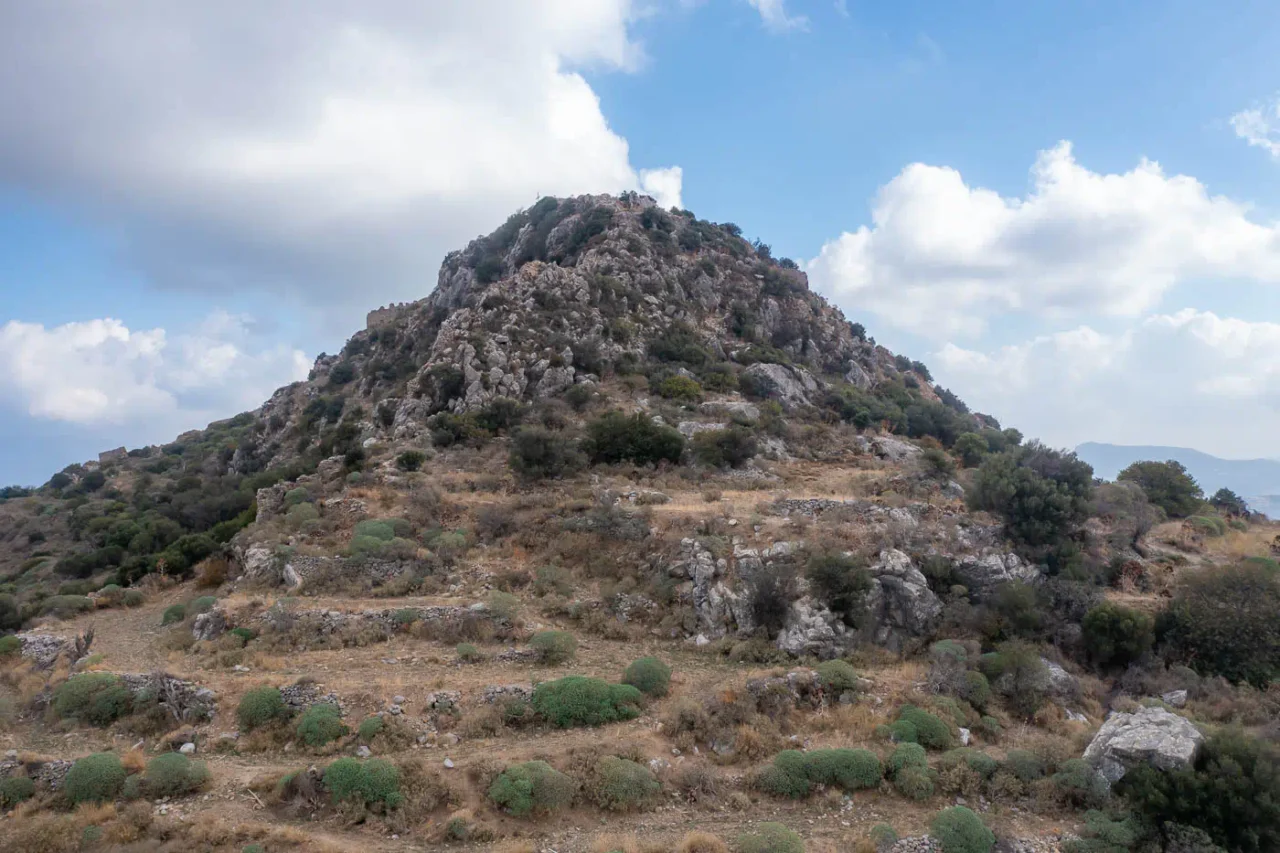



An Ancient City of Western Crete
Polyrrhenia, also known as Polyrrenion, was a city in ancient Crete, located on the northern coast of the western part of the island . It was built on a steep hill, about 2.5 kilometers south of the modern town of Kissamos. The city’s name, meaning “many sheep” or “many flocks”, likely reflects its origins as a center for sheep herding and pastoralism .
Historical Background
Polyrrhenia was inhabited from the Early Iron Age (11th century BC) until the Byzantine period, flourishing particularly in Hellenistic and Roman times . The city had a strategic location, with access to both the sea and the fertile plains of western Crete. Its port, Kissamos, was an important center for trade and commerce.
In the Hellenistic period, Polyrrhenia was a member of the Cretan League, a confederation of Cretan cities . The city was also known for its strong fortifications, which included a massive wall with towers and gates . In the 3rd century BC, Polyrrhenia was involved in a conflict with its neighbor, the city of Phalasarna . The conflict ended with the intervention of the Romans, who forced the two cities to sign a peace treaty.
During the Roman conquest of Crete in 69-67 BC, Polyrrhenia surrendered to the Romans without resistance . This decision likely saved the city from destruction, as other Cretan cities that resisted the Romans were sacked and burned. In the Roman period, Polyrrhenia continued to be an important center for agriculture and trade. The city also became a popular destination for Roman tourists, who were attracted by its beautiful scenery and its ancient ruins.
Polyrrhenia in the Cretan and Roman Wars
-
In 220 BC, during a civil war among the Cretan cities, Polyrrhenia allied with Lyttos against Knossos and Gortyn . This alliance proved successful, and Knossos and Gortyn were prevented from dominating the island.
-
During the Roman conquest of Crete, Polyrrhenia did not resist and even erected a statue in honor of the Roman general Quintus Caecilius Metellus . The base of this statue survives to this day.
-
In the Roman period, Polyrrhenia acquired an aqueduct, but the center of activities shifted to its port, Kissamos . The city continued to mint its own coins from the 4th century BC until the Roman era.
Reasons for Decline
The decline of Polyrrhenia began in the Late Roman period when the city was sacked by pirates . The city was also affected by a series of earthquakes in the 4th century AD. In the Byzantine period, Polyrrhenia was reduced to a small village. The final blow came in the 13th century AD when the city was conquered by the Venetians.
Archaeological Evidence
The archaeological site of Polyrrhenia is well preserved, and excavations have revealed a wealth of information about the city’s history and culture. The most impressive feature of the site is the Hellenistic fortification wall, which is still visible in many places. Other important finds include the remains of a large public building, a temple, and several houses.
-
The city occupied the southwestern part of a steep hill .
-
Remains of the city walls, primarily from the Roman period, and a section of the Hellenistic walls, are still preserved .
-
A large building for religious use, dating back to the early Hellenistic period, has been excavated .
-
A Byzantine castle was built on the site of the ancient acropolis, and its walls survive to a height of up to 3.5 meters .
-
The aqueduct is one of the most visible remnants of the ancient city .
-
A semicircular defensive tower is preserved next to the aqueduct and is connected to it via a pipeline .
-
Sections of the aqueduct’s galleries are visible within the modern village .
-
The water was collected from a carved underground reservoir, which was connected to a second reservoir via an open clay pipeline. Additionally, there are scattered carved cisterns in the archaeological site, and reservoirs were also present in the acropolis .
-
The houses of Polyrrhenia were carved into the rock, with built facades .
-
Higher on the hill is the church of the 99 Holy Fathers, built in the late 19th century using ancient building materials, including inscriptions dating from the 3rd to the 1st century BC .
-
A large building for religious use, possibly an altar or temple dedicated to Artemis, has been excavated next to the church .
-
Remains of an early Christian basilica have been found within the acropolis .
-
The necropolis of the Hellenistic period was located at the lowest point of the hill, but within the city walls, and includes carved chamber tombs, both above ground and underground .
Site: Key Points
-
Construction Period: Early Iron Age (11th century BC) to Byzantine period
-
Location: On a steep hill, about 2.5 kilometers south of Kissamos
-
Dimensions: The city covered an area of about 10 hectares, enclosed by a massive wall
-
Historical Significance: Polyrrhenia was an important center for sheep herding, agriculture, and trade in western Crete
-
Current Status: The ruins of Polyrrhenia are well preserved, and the site is open to the public
References
-
Andreadaki-Vlazaki, M., et al. 1997. “Αρχαιολογικό Μουσείο Χανίων.” ADelt 52:153–164.
-
Karambinis, M. 2022. “The cities of Crete under Roman rule (1st–3rd centuries AD).” JGA 7:233–268.
-
Malkin, I. 1994. Myth and territory in the Spartan Mediterranean. Cambridge: Cambridge University Press.
-
Mlinar, E. 2011. “Fortified towns, settlements and other strongholds on Crete from Archaic through Hellenistic times.” 10th IntCretCongr A4:23–32.
-
Stampolidis, N., et al. 1997. “Κνωσός: η αρχαία πόλη.” CretEstia 4:153–164.


There are no comments yet.